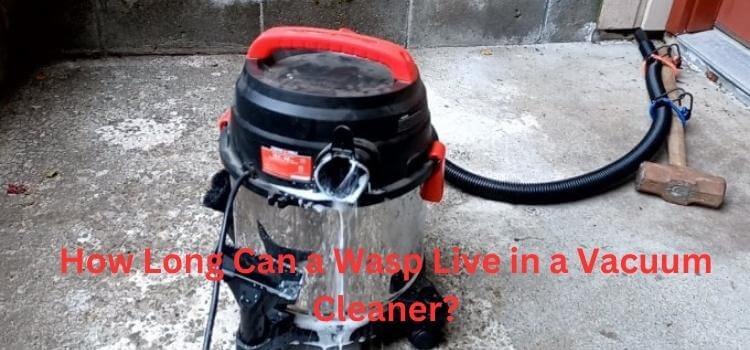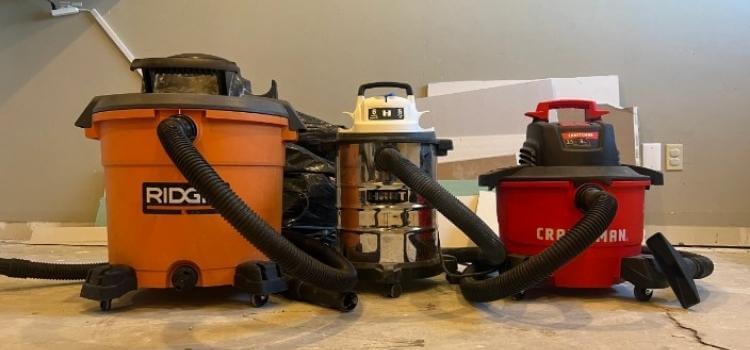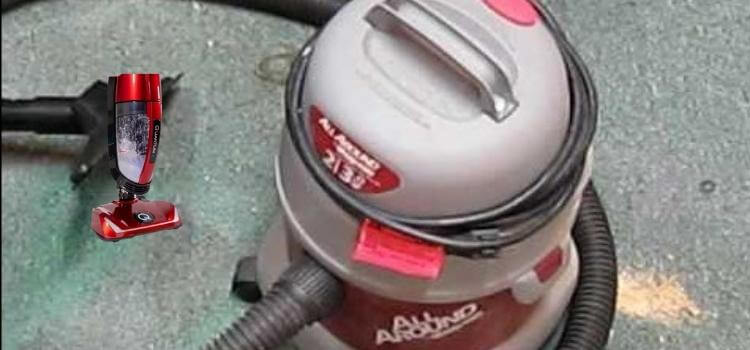As an Amazon Associate, I earn from qualifying purchases
Have you ever wondered what happens to a wasp once it’s been sucked into a vacuum cleaner? Understanding the fate of these pesky insects can help us manage household pests more effectively and prevent potential problems. This article explores how long a wasp can survive inside a vacuum cleaner, providing insights into wasp behavior, survival conditions, and practical solutions for homeowners.
Importance of Understanding Wasp Behavior
Understanding wasp behavior and lifespan is crucial for maintaining a pest-free home environment. Wasps can be more than just a nuisance; they can also pose risks to health and safety. By learning about their habits and survival mechanisms, we can take informed steps to manage and mitigate their presence in our living spaces.
Wasp Behavior and Lifespan
Typical Wasp Lifespan
Depending on the species, wasps typically live for several weeks to several months. Worker wasps usually have shorter lifespans, living for about 12-22 days, while queen wasps can live up to a year, particularly when they hibernate during the winter months.
Factors Affecting Wasp Lifespan
Several factors can influence the lifespan of a wasp, including:
- Species: Different species have varying lifespans.
- Season: Wasps live longer during the warm months.
- Environmental Conditions: Availability of food, water, and suitable nesting sites.
- Predators and Threats: Natural predators and human intervention can reduce their lifespan.

Inside a Vacuum Cleaner
Conditions Inside a Vacuum Cleaner
A vacuum cleaner presents a harsh environment for any insect. The conditions inside a vacuum cleaner bag or canister are typically:
- Dark and Confined: Limited space with no light.
- Lack of Food and Water: No access to sustenance.
- Mechanical Hazards: Moving parts and debris can cause injury or death.
Survival Challenges for a Wasp
The primary challenges for a wasp inside a vacuum cleaner include:
- Starvation: Without food, a wasp cannot survive for long.
- Dehydration: Lack of water accelerates the dying process.
- Physical Trauma: The force of being sucked in and the presence of sharp objects can be fatal.
Lifespan of a Wasp in a Vacuum Cleaner
Expected Lifespan Inside a Vacuum Cleaner
Due to the harsh conditions inside a vacuum cleaner, a wasp’s lifespan is significantly reduced. Typically, a wasp might survive several hours to a few days, depending on its initial health and the environment inside the vacuum.
Factors Influencing Survival Time
Key factors influencing a wasp’s survival time in a vacuum cleaner include:
- Initial Health: Healthier wasps may survive slightly longer.
- Type of Vacuum Cleaner: Bagged vacuums may offer more protection than bagless ones.
- Presence of Debris: The availability of organic matter might provide minimal sustenance.
Types and Categories
Different Species of Wasps
Wasps come in various species, each with different lifespans and behaviors. Common species include:
- Yellowjackets: Known for their aggressive behavior.
- Paper Wasps: Typically build nests in sheltered areas.
- Hornets: Larger and more aggressive than other wasp species.
Comparative Lifespan of Various Species
The lifespan of wasps varies by species. For example, yellowjackets might hornets can live up to a year. This variation impacts their survival prospects in confined environments like a vacuum cleaner.
Symptoms and Signs
Indications of a Wasp in Your Vacuum Cleaner
Detecting a wasp in your vacuum cleaner can be challenging. Common signs include:
- Buzzing Sounds Audible noises coming from the vacuum.
- Visible Movement: Spotting the wasp when emptying the vacuum bag or canister.
- Debris Disturbance: Unusual patterns in the collected debris.
Causes and Risk Factors
Why Wasps End Up in Vacuum Cleaners
Wasps may end up in vacuum cleaners due to the following:
- Accidental Sucking: They are inadvertently vacuumed while cleaning.
- Attraction to Food Particles: Drawn by the scent of food debris in the vacuum.
Environmental Factors Contributing to Wasp Intrusion
Certain environmental conditions can increase the likelihood of wasps entering your home and, subsequently, your vacuum cleaner:
- Open Windows and Doors: Providing easy access to the indoors.
- Proximity to Nests: Living close to wasp nests increases the chance of intrusion.
Diagnosis and Tests
Identifying a Wasp in Your Vacuum Cleaner
Confirming the presence of a wasp in your vacuum cleaner involves:
- Visual Inspection: Checking the vacuum bag or canister for signs of wasps.
- Listening for Buzzing: Identifying unusual noises emanating from the vacuum.
Tools and Methods for Confirmation
Tools and methods to confirm a wasp’s presence include:
- Flashlight: For better visibility inside the vacuum canister.
- Magnifying Glass: To inspect small or hidden areas.

Treatment Options
Safe Removal of Wasps from Vacuum Cleaners
Removing a wasp safely involves:
- Protective Gear: Wear gloves and long sleeves to avoid stings.
- Slow and Careful Inspection: Gently emptying the vacuum contents outside.
Preventing Future Intrusions
To prevent wasps from getting into your vacuum cleaner:
- Seal Entry Points: Keep windows and doors closed or screened.
- Regular Maintenance: Clean and empty your vacuum frequently.
Preventive Measures
Steps to Keep Wasps Out of Your Home
Preventive measures to keep wasps at bay include:
- Removing Food Sources: Keep food sealed and dispose of garbage properly.
- Using Wasp Repellents: Natural or chemical repellents can deter wasps.
Maintaining a Wasp-Free Environment
Maintaining a wasp-free home involves:
- Regular Inspections: Check for nests around your home.
- Professional Pest Control: Hiring experts if wasps become a persistent problem.

Personal Stories or Case Studies
Real-Life Encounters with Wasps in Vacuum Cleaners
Personal anecdotes from individuals who have encountered wasps in their vacuum cleaners can provide practical insights and tips.
Lessons Learned from Personal Experiences
Learning from others’ experiences can help you manage and prevent similar issues.
Expert Insights
Entomologists’ Views on Wasps in Household Appliances
Entomologists provide scientific insights into why wasps might end up in household appliances and how to deal with them.
Advice from Pest Control Professionals
Professional pest control experts advise managing wasp intrusions and maintaining a wasp-free home.
Conclusion
Summary of Key Points
- Wasps have short lifespans, significantly reduced in a vacuum cleaner.
- Factors such as species, environment, and initial health impact their survival.
- Preventive measures can help keep your home wasp-free.
Final Thoughts and Recommendations
Understanding wasp behavior and taking proactive steps can effectively manage and prevent wasp problems in your household.
As an Amazon Associate, I earn from qualifying purchases